As above, So below
Eric Zetterquist, Kotscha Reist, Zheng YiVIP预览 Preview
NO.202, 2nd Floor, Sea World Culture & Arts Center, Shenzhen
* Please scroll down for the English version记忆是私密的,亦可共享或共存于集体之中。从宏观的视角来看,记忆是特定年代下,社会、文化环境给予人们的集体印象及其中产生的具有时代信息的器物,这些器物也反映了相应的风格特征、艺术形式等。以微观角度而言,记忆也是独立个体所拥有的 “秘密”,艺术家将他们的记忆融入作品,收集历史时间线上的记忆碎片,使用各种媒介对其创作,或“挪用”过去的事物素材并将其转化为独特的创作语言,甚至将其“还原”至艺术家心目中事物应有的状态,构成现当代语境下对时间意义的个人解读。局部或离散、立体或平面,当代作品和古代器物在新的时空维度中传达着对过去“盛物”的思考,并以再次诠释记忆的方式形成特殊的个人档案资料,在细微之处感受空间中时间性的存在与变幻。
记忆通常亦是抽象且难以名状的,因此人们倾向将它们附着于实体,作为记忆的象征留存。此次展览同时展出了三位风格迥异的国内外艺术家作品,从绘画、摄影、装置等不同媒介处窥见艺术家们对“物化”时间性的独特诠释。同理,难参透的禅意也经由贵族女性生活、世俗起居方式与雅致士人品味的记忆外化精藏于盛具之上。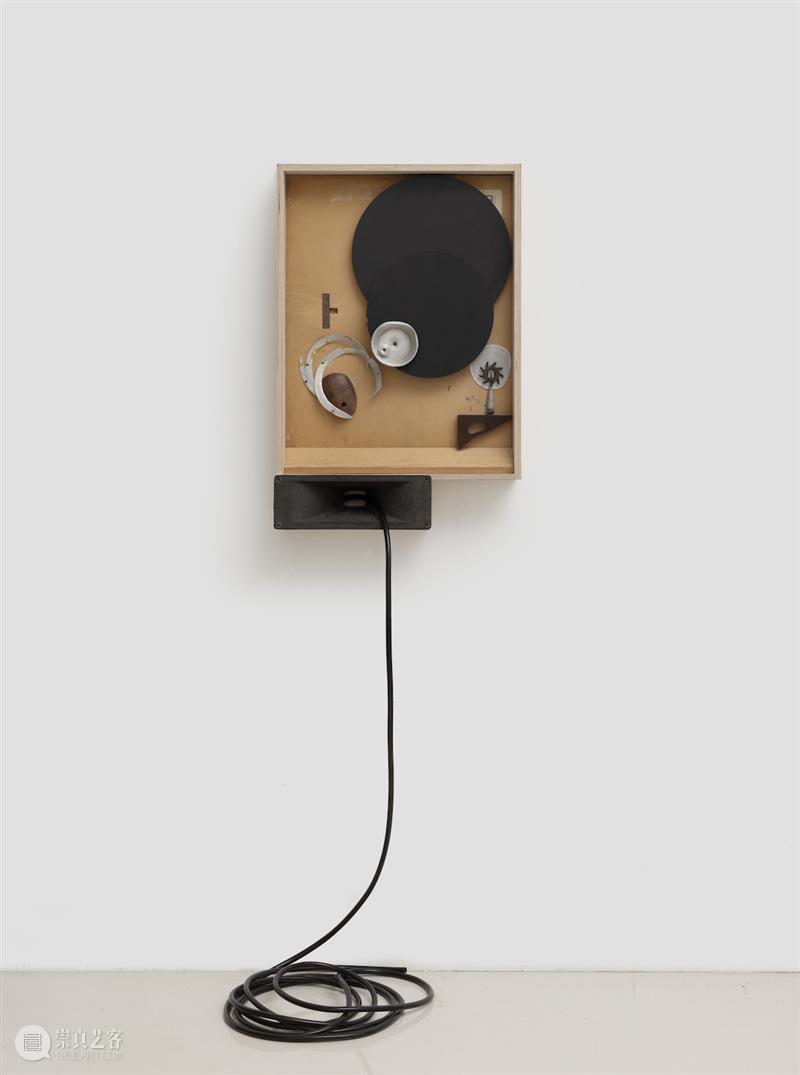
阿亚华斯卡 Ayahuasca
郑毅 Zheng Yi
铝,木头,现成品
77.5 x 52 x 15 cm
2023
郑毅创作的物与盒子装置是一种有规则且被聚焦的场域,它们以极简的语言塑造个体与集体生命之间的对话;埃里克·扎特奎斯特(Eric Zetterquist)则聚焦于古代经典的日用器物和食物自身的形态,在正负形组合间营造一种西方人眼中文人画的山水意象氛围;而科查·瑞斯特(Kotscha Reist)倾向于使用私人照片作为底稿,通过重新演绎和再创作,以模糊笔触勾勒出遥远记忆的感觉。这三位艺术家的作品呈现了各自独特而平行的记忆时空,并引导观众进入他们的记忆场域。同时,手中之器承载了古人对理想生活的自然理解,存续了人类的温度,装载了世世代代的记忆。在同一空间内,时间随着不同的记忆交错叠加,如同一张不断扩展而又错综复杂的网。郑毅的作品中“装藏”着他的记忆感受。带有既定用途和定义的物品按照艺术家观念中应有的样式被有逻辑地组合在有限的盒子空间里,宛如一个奇异柜,在预制范围内保留着他的个人感受,延伸了他记忆的源泉。正如艺术家提及作品对他而言是一种通道,可以带他穿越不同的时空,通过铝、骨头、蜡和木头等不同材质的自由切换,郑毅从质感、形状以及物体的排列方面出发,在拼接安装间试图阐释他的思考。有时,他会从盒子中延伸拓展,打破方框内作品的固定形状,使其与外部场域产生对比空间的互动。当一件作品“完成”后,还要经受艺术家的校核,这个时间可长可短,有时调整数月才能被郑毅核准通过,也直到那时这件作品才会被允许示人。郑毅相信物与作品会自在地生长形成一种“生命”,这种个体生命会与展览空间和观者相连接,并在观众的记忆中再次生衍。“我希望我的艺术是充满美感的,它不仅与我们这代人息息相关,与后代也是如此。我们永远都需要与过去产生联系,而追求永恒的关联性正是我创作服务型艺术的原因所在。”建窑茶碗,南宋, 1127 - 1279,中国 Jian-Yao Tea Bowl, Southern Song Dynasty 1127 -1279 A.D., China
埃里克·扎特奎斯特 Eric Zetterquist2019
埃里克·扎特奎斯特(Eric Zetterquist)的作品融合了现代视觉成像的摄影技术和古代器物元素,其中古代瓷器作为主体依托表现出艺术家对于器物线条的精准把控,同时隐藏着记忆和已逝时间的思考。埃里克在博物馆的长期拍摄经验让他对器物有着独到的审美,而身为外国人,他域外旁观者的独特视角又赋予中国古代器物另一层魅力。在一定程度上,埃里克对古代器物进行了抽象化的当代诠释,并通过黑白为主的缄默冷静色相来探索和呈现器物的负空间。古人通常在制作器物前都辅以手绘设计,并如宋代鉴藏青铜器一般用白描记录其器型与审美;同理,埃里克的作品也以后世的审美视角为这些古代器物塑造了个性化的当代肖像。艺术家专注于美学审视,以纯粹的黑白语言,突出了极简线条的当代性描述。他运用摄影将古代和当代互相连接与转述,他的作品则将艺术家、观者以及过去的实体器物联系在一起,形成一种对当下的永恒贮存。“所有进入他(科查·瑞斯特)艺术创作的事物都要经过一个精神和绘画上的挪用过程。”——西比尔-欧姆林(Sibylle Omlin),艺术评论家日常之物在科查·瑞斯特(Kotscha Reist)的作品中由原本立体的形态被艺术家“挪用”,并以平面视觉的形式呈现。他的创作灵感源于收集反应集体意识的照片图像,以及他个人生活中的自我意识映像。艺术家将焦点放在令其留下记忆之处,并使用清淡质朴的颜色与笔触,赋予物品如黄昏下薄雾一般的光影,同时蕴含着超越日常生活的禅意。艺术家常选择那些本身带有叙事性和精神性的日常物品作为记忆载体和勾勒对象,如角落里的储物箱、一隅的壁炉、书架上斜置的书等等,在场景中呈现静谧又独立的微妙气场。同时,观者可能会不自觉地介入到艺术家与画面之间的私语当中,或者创造自己与作品定格记忆的互动。这些零散的记忆似乎渗透在每一笔之间,把观者引向一个个深藏情绪的场景。
记忆化作人的倒影,器物变为记忆的盛具。就像是赫尔墨斯学著作《翠玉录》(Emerald Tablet, Hermetic text)中记载的对于星辰与人关系的格言,“如上,即下”(As above, so below)。其可直译为“在天成象,在地成形”——人们向天寻觅自己的起源,在观相授时中领悟世界运转的秩序;而在追忆之中所寻找的或许正是自身精神及物质世界的倒影。人类记忆的错综复杂,好比平行时空中纷纭交错发生的许多故事,每个故事都是独立而并行的,但它们又彼此交织,相互关联。抽象的印象影响其具体的表达,这些样貌又常常被同质化且归属于广义的集体潜意识的记忆之中。正如心理学家托尔文(Endel Tulving)所提出的“情节记忆”—— 对于个人经验以及其在时序上关系的记忆,在场域中从视觉上再次回忆起与“物”相关的时刻之中重拾起当时的情境,仿似一次穿梭时空的旅行。如上,即下。星辰一般的无数记忆如同人类的倒影,既源自过去,又承载着内心的情感。无论是作品中的物,还是古代器物本体,它们既存续着不同的过往经历,亦连接着当下体验,同时也创造了现实空间中交织的“新记忆”。在此,物并非“物象”本身,而是与人的内心世界相互关联的整体,当人类透过科学方法不断探索和追求物质世界的本质,可能其最终只能在人类内在的潜意识中被感知,是为如其在内,如其在外;如其在上,如其在下。展览将持续至2024年01月14号
Memories are private but can also be shared or exist collectively. From a macro perspective, memories encompass the collective impressions that society and cultural environments impart to individuals in a specific era, intertwined with the artifacts that emerge from these impressions, carrying the information of that era. These artifacts also reflect corresponding stylistic characteristics and artistic forms. From a micro perspective, memories are also the "secrets" possessed by individuals. Artists incorporate their memories into their artworks, collect fragments of memories along the timeline of history, utilize various media to create, "appropriate" materials from the past, and transform them into a unique artistic language, or even "restore" them to their intended state in the artist's mind. This forms a personal interpretation of the meaning of time within the context of the contemporary times. Partial or dispersed, three-dimensional or flat, the contemporary artworks and ancient artifacts convey reflections on the past "object holder" in a new dimension of space and time. They create a unique personal archive by reinterpreting memories, enabling audiences to subtly perceive the existence and transformation of temporality within space."Memories are often abstract and difficult to articulate, so people tend to attach them to tangible entities as symbols of remembrance. The exhibition features artworks of three artists with distinct styles. Through mediums like painting, photography, and installations, audiences can catch a glimpse of these artists' unique interpretations of "materialized" temporality. Similarly, the profound essence of Zen is projected onto the exquisite collection of artifacts from aristocratic women's secular experience and the memories of elegant scholars' life.The box installations created by artist Zheng Yi is a regulated and focused space, using minimalistic language to shape a dialogue between individuals and collective life. Eric Zetterquist concentrates on the forms of ancient classical daily objects and the form of food itself, creating an atmosphere reminiscent of literati landscape paintings through the juxtaposition of positive and negative shapes. Kotscha Reist tends to use private photographs as the base, utilizing reinterpretation and recreation to evoke the sensation of distant memories through blurred brushstrokes. The works of these three artists present distinctive and parallel realms of memory, guiding audiences to delve into the unique domains of their respective recollections. At the same time, the objects in hands carry the ancient people's inherent understanding of an ideal life, preserving the warmth of humanity, and laden with memories passed down from generation to generation. Within the same space, time intertwines and overlaps with different memories, like an ever-expanding and intricate net."These wooden boxes attempt to explore the spirituality of objects and the objectification of humans."Zheng Yi's artworks "encapsulates" his memories and feelings. Objects with established purposes and definitions are logically assembled in a limited box space according to the artist's conception of what they should be, all together like a cabinet of wonders. Within this predefined scope, they retain his personal feelings and extend the source of his memories. As the artist mentions that the artwork serves as a passage for him, allowing him to transcend different times and spaces. Zheng Yi explores his thoughts and expresses his contemplations through varied textures, shapes, and arrangements of objects, achieved by freely switching between materials such as aluminum, bone, wax, and wood. Sometimes, he extends and expands from the box, breaking the fixed shape of the artwork within the frame, creating interactive contrasts between the artwork and the external space. When a work is "completed," it still needs to undergo the artist's verification, a process that can vary in duration. Sometimes, it takes several months before Zheng Yi approves the work, and only then is it allowed to be shown to the public. Zheng Yi believes that objects and artworks will evolve, forming a kind of "life" that connects with the exhibition space and the audience, reproducing itself within the memories of them.“I want my art to be beautiful and relevant, not only to our generation, but future generations as well. There will always be a need to connect humanity to its past, and the pursuit of perpetual relevance is why I make art that serves.”Eric Zetterquist's works blend modern visual imaging techniques with elements of ancient artifacts. The main focus on ancient ceramics showcases the artist's precise control over the lines of the objects while also concealing reflections on memory and the passage of time. Eric's long experience of photographing in museums has given him a unique aesthetic for artifacts, and as a foreigner, his distinct perspective adds another layer of charm to those antiquities. To a certain extent, Eric has abstracted and provided a contemporary interpretation of ancient artifacts, exploring and presenting the negative spaces of objects through a predominantly black-and-white, silent, and calm color palette. In ancient times, the creation of artifacts was often accompanied by hand-drawn designs. People would record the shapes and aesthetics thinking of the artifacts through white sketches, just like how the Song Dynasty meticulously documented their collection of ancient bronze vessels. Similarly, Eric's work crafts personalized, contemporary portraits of these ancient artifacts through the aesthetic lens of a modern perspective. Focusing on aesthetic scrutiny, Eric's pure black-and-white language highlights the contemporary depiction of minimalist lines. He employs photography to establish connections and narrate the ancient and contemporary, with his works uniting the artist, the viewer, and the physical artifacts of the past, creating a timeless archive of the present.Everything that finds its way into his art goes through a process of mental and painterly appropriation.——Sibylle Omlin, Art CriticIn Kotscha Reist's works, everyday objects are "appropriated" from their original three-dimensional forms and presented as flat visuals. His artworks draw inspiration from a collection of photographic images that reflect collective consciousness, as well as self-conscious images from his personal life. The artist focuses on capturing places that leave him a lasting memory and uses light, delicate colors, and brushstrokes to give the objects a misty ambiance akin to dusk, also imbuing a Zen-like quality that transcends everyday life. The artist often chooses everyday objects that possess narrative and spiritual qualities as carriers of memory and objects to be sketched, such as a storage box in a corner, a fireplace, a book placed diagonally on a shelf, and more, all presented in a scene that emanates a serene and independent subtle aura. Meanwhile, audiences may unconsciously intervene in the whispers between the artist and the artworks, or create their own interaction with the artwork to solidify memories. These scattered memories seem to permeate every brushstroke, leading the audiences to a scene of deep-seated emotions.Memories become reflections of the individual, and objects transform into receptacles of memory, embodying a concept akin to the aphorism of the relationship between stars and humanity, as recorded in the Emerald Tablet “As above, so below”. This Hermetic text can be translated to the meaning raised in “I CHING (Book of Changes)” ---- that people seek their origins in the sky, and comprehend the order of the world's workings through the observation of celestial phenomena and the passage of time. Simultaneously, while within the realm of remembrance, they may be searching for reflections of their own spiritual and material existence. The intricacies of human memory resemble the multitude of stories unfolding in a parallel universe, each one independent and parallel, yet also intertwined and interrelated with each other. Abstract impressions influence their concrete expressions, often assimilated and attributed to the collective subconscious memory in a broad sense. Just as psychologist Endel Tulving proposed the concept of "episodic memory"- the memory of personal experience and their temporal relationships, within the artistic realm, audiences visually revisit the context of those moments associated with "objects", as if embarking on a journey through time and space.As above, so below. The countless memories, like stars, are akin to reflections of human beings, originating from the past and carrying inner emotions. Whether it is the objects in the artworks or the ancient artifacts themselves, they not only have different past experiences but also connect with present experiences, and at the same time, they create intertwined "new memories" within the physical space of reality. Here, objects are not merely "physical entities" per se, but a whole interconnected with the human inner world. As humans continuously explore and pursue the essence of the material world through scientific methods, they may ultimately perceive it only within their intrinsic subconsciousness, as which “As within, so without. As above, so below.” This exhibition will continue to January 14th, 2024.
请向下滑动文字 Please swipe down the text
上世纪80年代,埃里克·扎特奎斯特(Eric Zetterquist)在纽约担任日本艺术家杉本博司(Hiroshi Sugimoto)的摄影工作室经理,开启了他的摄影事业。由于精通日语,扎特奎斯特负责协助杉本摄影和工作室的运营。1992年他在纽约成立了“Zetterquist Galleries”,专⻔经营中国艺术品和陶瓷艺术品。扎特奎斯特的摄影作品曾在亚洲和美国等地展出,他的专著《古陶瓷肖像》(Object Portaits)由美国Nazraeli出版社于2018年出版。
1982年到1992年的10年之间,埃里克·扎特奎斯特在现代艺术家杉本博司(1948-)麾下一边工作一边学习现代摄影与东方古典艺术。他关于实物装置的肖像摄影作品,其实可以称为“古陶瓷肖像”摄影,是将古陶瓷器物的细节进行高度抽象化艺术处理的一个系列。扎特奎斯特本人认为,这一系列作品是“东洋与西洋、古代与现代的交汇”,其中涵盖了硬边绘画技术(Hard Edge)和高度概括后的宋瓷造型元素。倘若再进一步,其中还有宋代山水画的审美取向,那么,可以认为这些作品里也深藏了亚历山大·考尔德(Alexander Calder,1898-1976)所代表的现代主义构成风格。
Eric Zetterquist (1962- ) studied contemporary photographic expression and oriental antique art while working for Japanese modern artist Hiroshi Sugimoto (1948- ) for 10 years until 1992. Today he is based in New York. “Object Portraits”, mainly portraits of antique ceramics, is a series of highly sophisticated, abstract expressions of the details of antique ceramics. Zetterquist describes this series as an “East-Meets-West and Old-Meets-New” project, and mentions that he was inspired by hard-edge artworks and Song ceramics. In fact, some of his works suggest influence of Song landscape paintings while other works are reminiscent of modernist composition as exemplified in Alexander Calder (1898-1976) ’s works. Zetterquist has been photographing the collection in the Philadelphia Museum of Art (2014) as well as in the Southeast Asian Ceramics Museum in Bangkok (2016) and held exhibitions in both museums on his “Object Portrait” series. The exhibition in our museum would be the first opportunity to introduce his works in Japan, which are 34 portraits of ceramic artworks in our collection photographed in 2016. The ceramic works which acted as “models” will also be on display along with their portraits.
科查·瑞斯特(Kotscha Reist)1963年出生于瑞士伯尔尼,现居伯尔尼并于图恩工作。科查的绘画持续地探索着两个题材:首先是他对摄影的学习,其次是他对绘画自我反思的讨论,这一讨论自20世纪80年代中期就开始在伯尔尼美术馆的环境中深入进行。科查的摄影素材来源广泛,他从广阔的宇宙中汲取灵感,并以此创作了树枝结构、窗户、童年照片等题材的绘画作品。他通常会放大和异化原作,让画中的图案像透过面纱一样显现出来,从而几乎使其消失,这种存在与不存在的辩证关系贯穿于他的作品始终。通过薄而多层次地涂抹颜料并保持对整体色彩明度的克制,科查的创作反映了存在与消失之间微妙的相互作用。
科查定期在瑞士和其他国家举办展览,其作品也被蓬皮杜艺术中心、诺曼底艺术基金会、瑞士联合银行伦敦分行、荷兰ABN AMRO银行、伯尔尼、图恩美术馆等重要机构收藏。
Born in 1963, he lives and works in Bern. Graduating in 1989 from the Gerrit Rietveld Academie, he is interested in figurative painting and works on paper, always linked to a conceptual realization. Alongside his partner Sibylla Walpen, he has carried out various projects in the public spaces of the canton of Bern and Valais. He regularly exhibits in Switzerland and abroad. His work is represented in international and Swiss collections (Centre Pompidou, Frac Normandie, UBS London, ABN AMRO in the Netherlands, Kunstmuseum Bern, Thun, etc.).
He has received awards including the State of Holland grant in 1993, the Aeschlimann Corti grant in 1996, residences from the canton of Bern in New York (1999) and Berlin (2010), and a travel grant from the Canton of Bern (2015). He has also curated various Off Spaces. As the President of the Kunstgesellschaft Bern and the Äschlimann Corti grant, he is a member of the board of the Kunstmuseum Bern and Zentrum Paul Klee foundation.郑毅,1980年出生于天津,目前生活、工作于北京。2003年毕业于天津工艺美术学院国画系。自2010年以来,郑毅一直创作关于“盒子”的作品。这些作品大都关乎个人记忆、集体记忆并形成了其内在的体系。他曾经受到超现实主义、集合主义以及极简主义的影响,并试图将物的精神性和人类生命体验结合在一起,这是中国美学中的禅意特征。如今他更加关注作品的现场性,以及如何在作品和公众之间形成对话和共振。Zheng Yi, born in 1980 in Tianjin, currently lives and works in Beijing, graduated from the Chinese Painting Department of Tianjin Academy of Arts and Crafts in 2003. Zheng Yi has made works about boxes since 2010. These works concern on personal memory, collective memory. Influenced by Surrealism, Assemblism and Minimalism, He try to combine the spirit of substance with the experience of human life, which is the essential of “Zen” aestheics. He is now focusing on the public spaces of his works, and trying to build a bridge for conversation between “box” and viewers.
万一空间是由三位90后艺术从业者在深圳创立的艺术空间。其诞生于疫情席卷全球的2020年,在后疫情时代涌现对艺术与生命的全新思考。空间致力于消解当代与古代的边界,融合美学研究逻辑下的现当代与古代艺术,构建一个不同国家、时期和形式的艺术在同一语境下共容的场域。W.ONESPACE is an art gallery founded in Shenzhen by three Generation Y art practitioners. It was established in 2020 during the outbreak of the COVID-19 pandemic. New perspectives on art and life have emerged in this post-pandemic era. W.ONESPACE aims to melt the boundaries between present, future and the past by mixing contemporary and ancient art under the logic of aesthetic research, thus bringing together arts of different countries, different periods and different forms to interact and express in unity as ONE.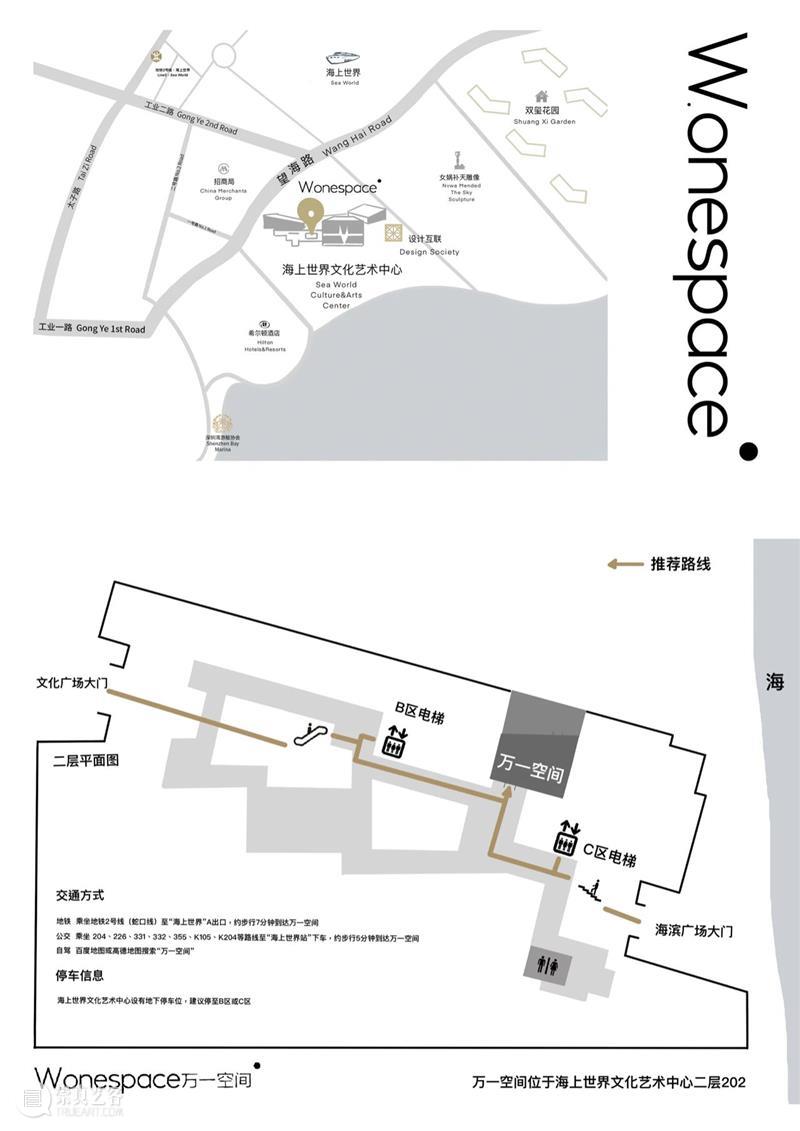
weonspice为一个灵感、冲动和际遇碰撞交错的实验场,这里有灵机一动、不切实际或偶尔严肃的思考和行动。







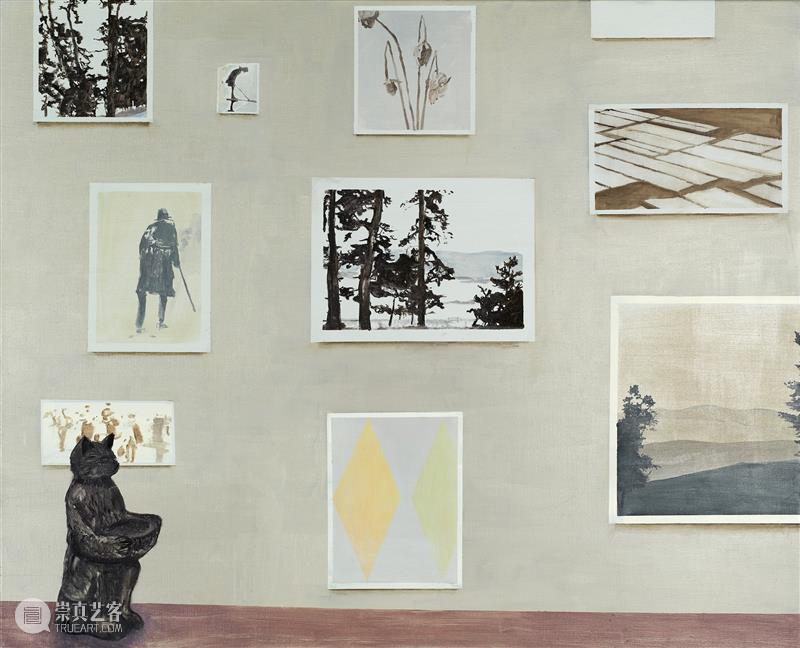
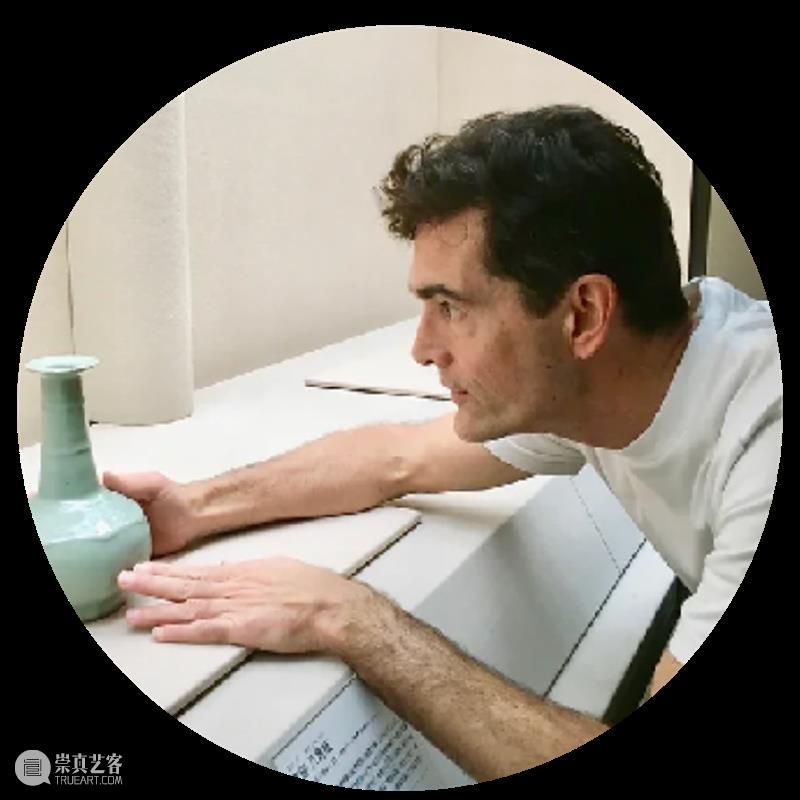
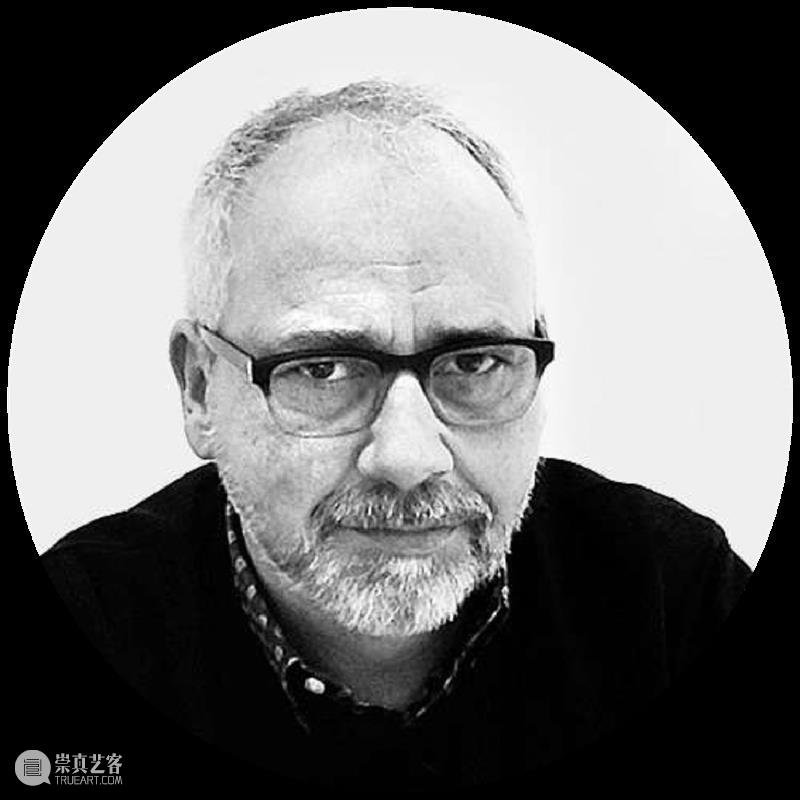


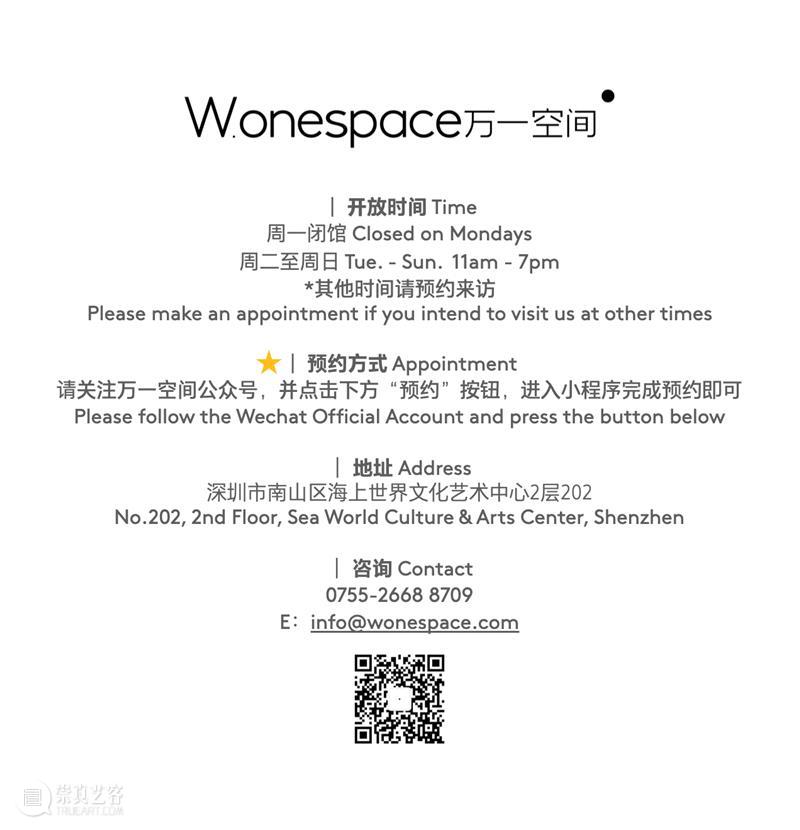


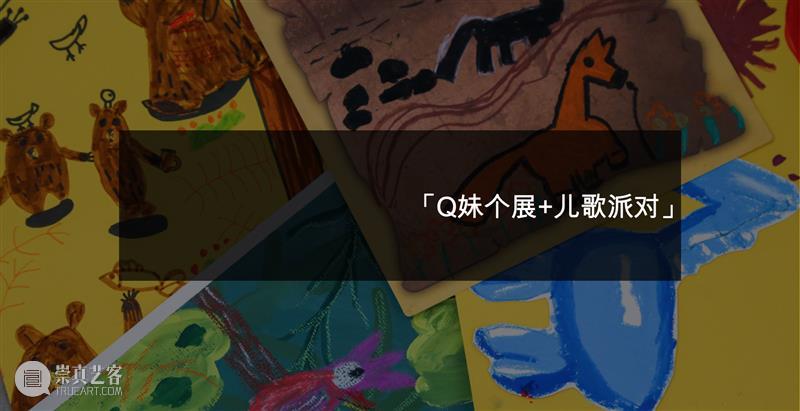

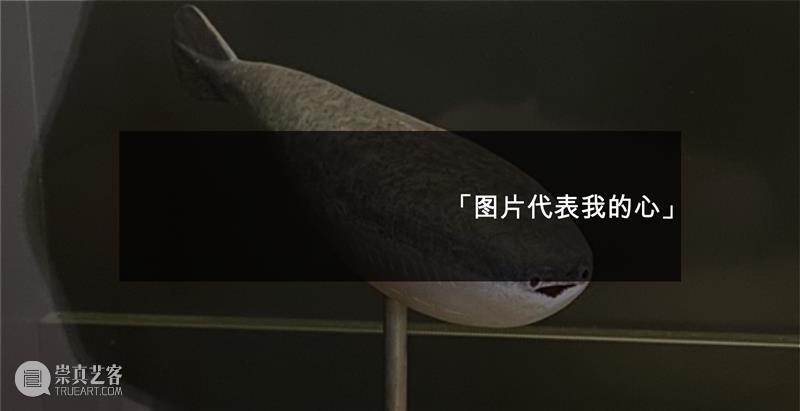





 分享
分享